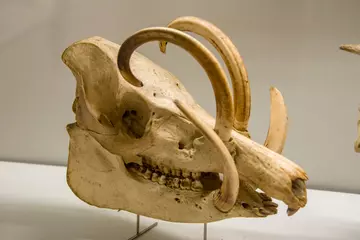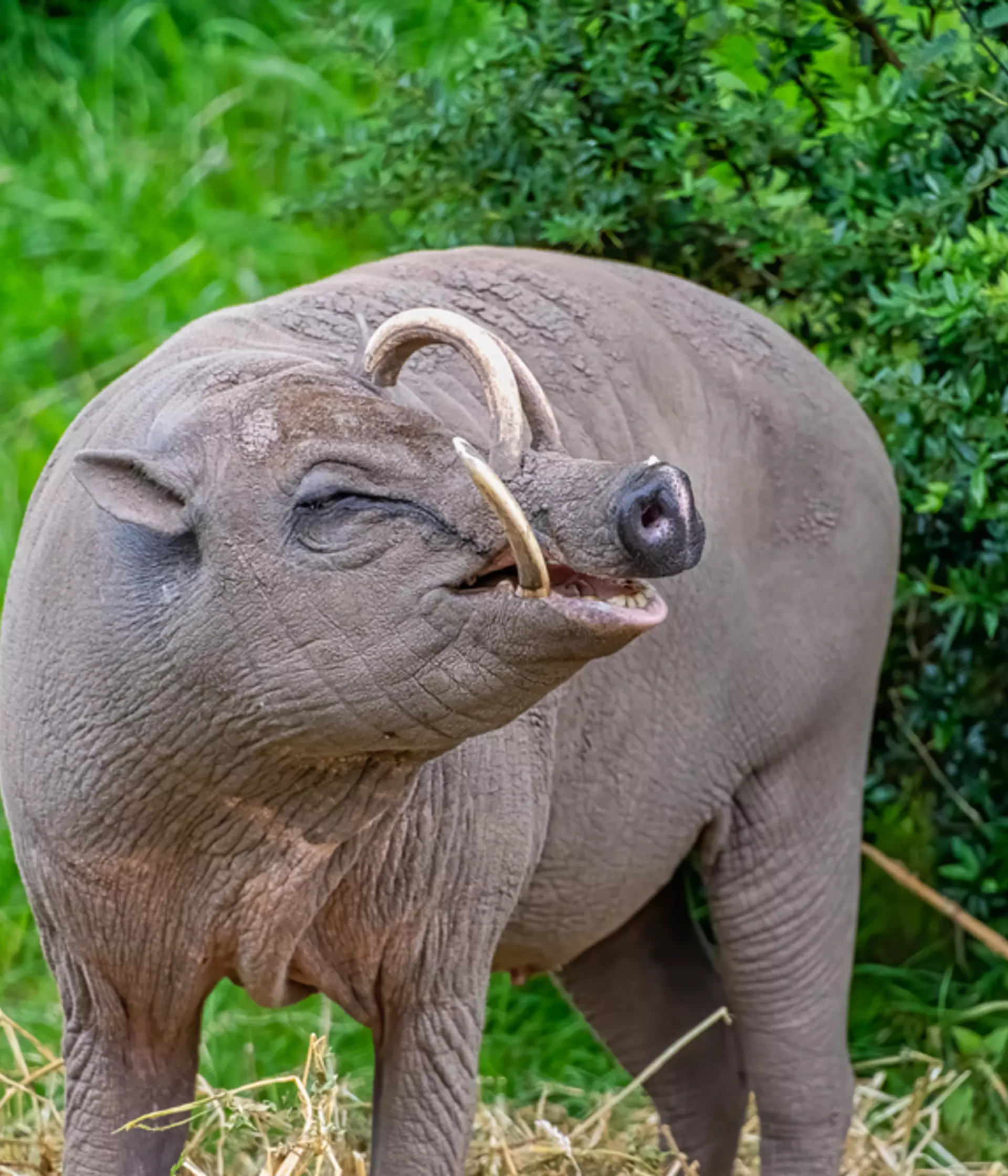
Babirusa facts
Most scientists believe babirusa are one of the oldest living members of the pig family. Babirusa's tusks are actually canine teeth which can reach 40cm long and grow through their skin. These teeth keep growing unless they are broken and can even grow into their skull if they're not worn down. Female babirusas have much shorter canine teeth that don’t typically pierce through their skin.

The word babirusa means “pig deer” in the Malay language, as their wild-growing tusks are reminiscent of deer antlers.
Why do babirusas have tusks?
The reason babirusas have tusks is a bit of a mystery. It was originally believed they helped males fight with each other, but babirusa don’t actually use their tusks to fight and instead get up onto their hind legs and box each other. Babirusa tusks are also fragile and can’t withstand much pressure.
It’s now speculated that the tusks are for displaying to females, similar to a peacock. But this theory hasn’t yet been put to the test by scientists.

Babirusa at London Zoo
We have two adult Babirusa at the Zoo, a female named Bethari and a male named Ubi, which welcomed two piglets in Summer 2024. You can come and meet them at their paddock which is opposite the Tiger Territory habitat.
Babirusa threats
Bairusa's biggest threat is hunting. As their numbers continue to reduce, hunting is becoming more common deeper and deeper into their habitats.
Commercial logging has also reduced the amount lowland forests which they depend upon by over 75%. Through buying FSC certified products, you can play your part in ensuring the products you buy didn’t come from deforested habitats. Babirusa’s face very similar threats to anoas, and are sometimes even caught in the same traps by hunters.
Make unforgettable memories in the heart of one of the world’s most vibrant capital cities, from feeding penguins, meeting monkeys or coming face-to-face with the world's tallest animal!
